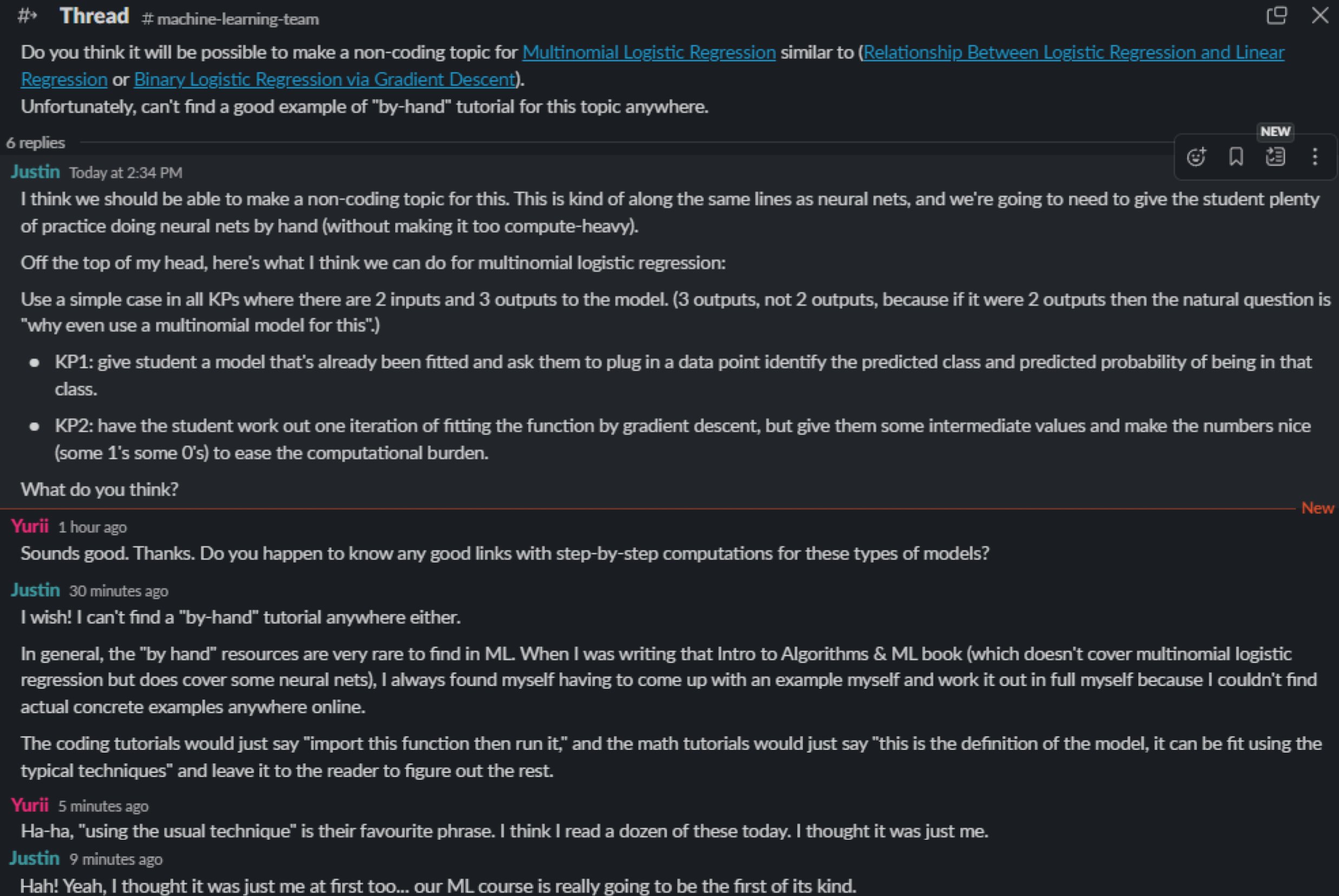It’s Rare to Find Computation Walkthroughs in ML Learning Resources
Coding tutorials typically just say "import this function then run it," and the math tutorials typically just say "this is the form of the model, you can fit it using the usual techniques" and leave it to the reader to figure out the rest.
Want to get notified about new posts? Join the mailing list and follow on X/Twitter.
In ML learning resources, it’s incredibly rare to find hands-on examples stepping through actual computations.
Coding tutorials typically just say “import this function then run it,” and the math tutorials typically just say “this is the form of the model, you can fit it using the usual techniques” and leave it to the reader to figure out the rest.
Yurii, one of our star content developers, came face-to-face with this issue today. Usually there are some online resources that we can use to help scope out topics more efficiently, but this time, on the Multinomial Logistic Regression topic, he couldn’t find any examples of by-hand problems.
Which led him to wonder “can you even have students do by-hand practice with this model,” to which the answer is yes – it’s just that, as far as we can tell, nobody has really done it before (at least not publicly).
My favorite part of our discussion (see attached screenshot from our internal Slack):
- "Ha-ha, 'using the usual technique' is their favourite phrase. I think I read a dozen of these today. I thought it was just me."

Which is exactly how I felt, too, when I was teaching ML and gradually consolidating the lessons into that Intro to Algos & ML book. I always found myself having to come up with an example off the top of my head and fully work it out myself because I couldn’t find actual concrete examples anywhere online.
At first I thought maybe I just sucked at tracking down those kinds of online resources… but no, it’s that such resources literally do not exist in ML.
The upcoming ML course on Math Academy is taking this approach, and we’re going to turn the dial up to 11 doing it at production scale: way more comprehensive, way more granular.
There are going to be so many nice computational examples and by-hand problems where you really get your hands on the internal workings of an algorithm.
(Don’t worry, we’ll set up the problem so as to limit the amount of computational burden while still providing hands-on experience with the key components… And don’t worry, there will be coding projects too ;) ).
Want to get notified about new posts? Join the mailing list and follow on X/Twitter.